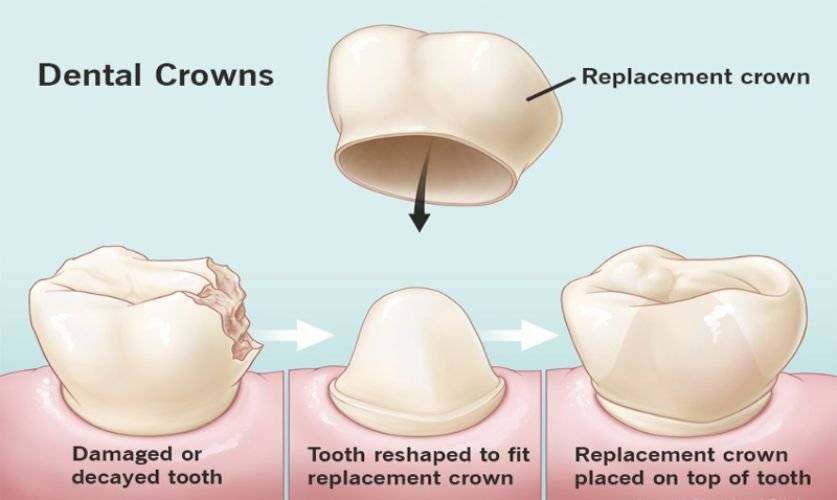
Menu
Dental Crowns
What is Dental Crowns?
A dental crown is a custom-made cap that covers a damaged, decayed, or misshapen tooth. It restores the tooth’s function, shape, strength, and appearance. Crowns are typically made from materials like porcelain, ceramic, metal, or resin and are bonded onto the remaining part of the tooth.

Uses of Dental Crowns:
- To protect a weak tooth (e.g., from decay) from breaking and to hold together parts of a cracked tooth
- To restore a broken tooth or one that has been severely worn down
- To cover or support a tooth with a large filling when there isn’t much tooth left
- To hold a dental bridge in place
- To cover a dental implant
- To improve the appearance of a tooth, for cosmetic reasons (such as to cover misshapen or severely discolored teeth)
The Dental Crown Process:
- Preparation: The dentist first files down the tooth to make room for the crown. If the tooth is damaged or decayed, it may need to be rebuilt first.
- Impression: An impression of the filed-down tooth is taken to create the custom crown. A temporary crown may be the placed while the permanent one is made.
- Fitting: Once the permanent crown is ready (usually a couple of weeks), the temporary crown is removed, and the new crown is cemented into place.
Types of Dental Crowns:
- Porcelain or ceramic crowns: These provide a natural look and are best suited for front teeth.
- Metal crowns (gold or alloys): These are more durable and resistant to wear, but are often used for back teeth due to their noticeable appearance.
- Porcelain-fused-to-metal crowns: These combine the durability of metal with the natural look of porcelain, but over time, the metal underneath may show as a dark line.
- Resin crowns: These are more affordable but may wear down or fracture more easily than other types.
Advantages:
- Restores function and appearance of damaged teeth
- Provides long-lasting protection and support
- Customizable for a natural look
Disadvantages:
- May require filing down of the natural tooth
- Can be more expensive than other restorations like fillings
- Some types (like metal crowns) may not be aesthetically pleasing